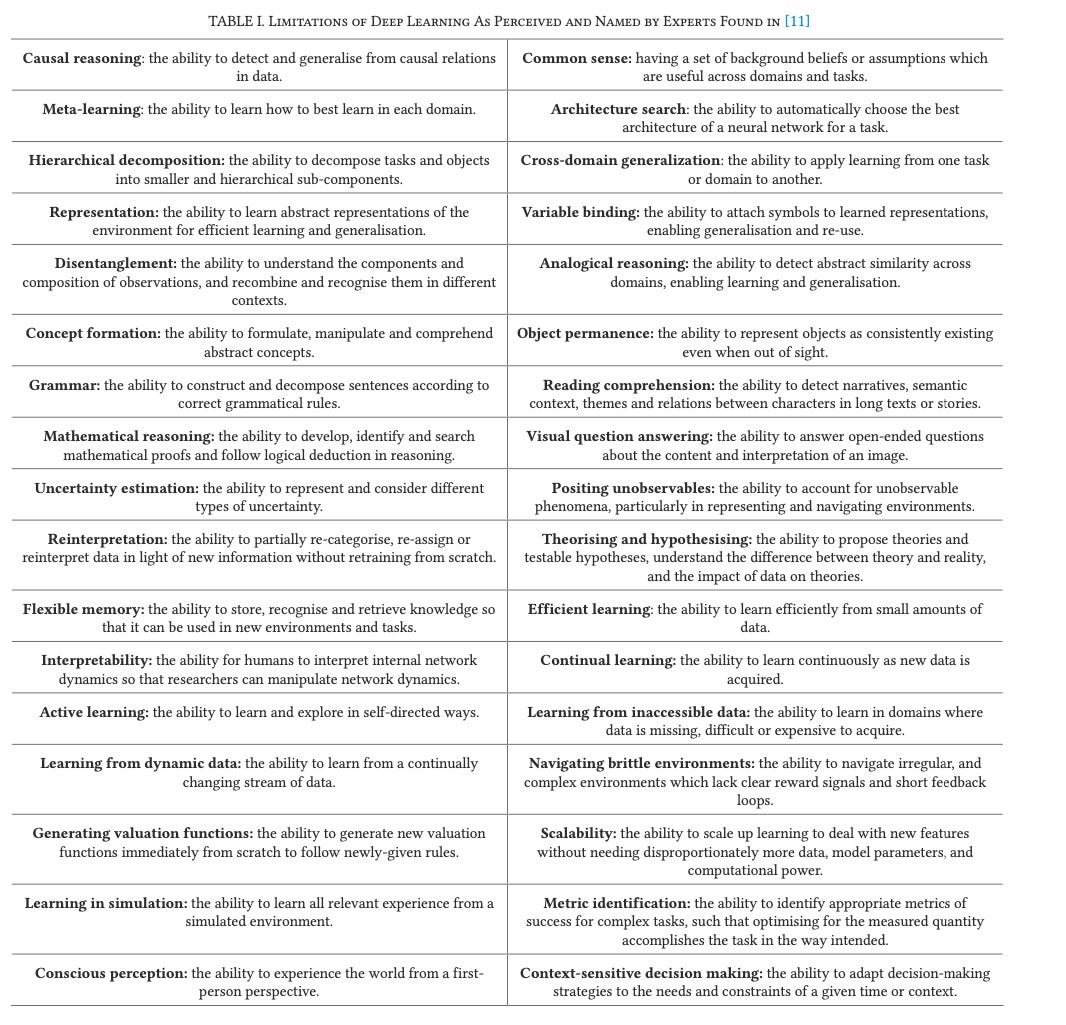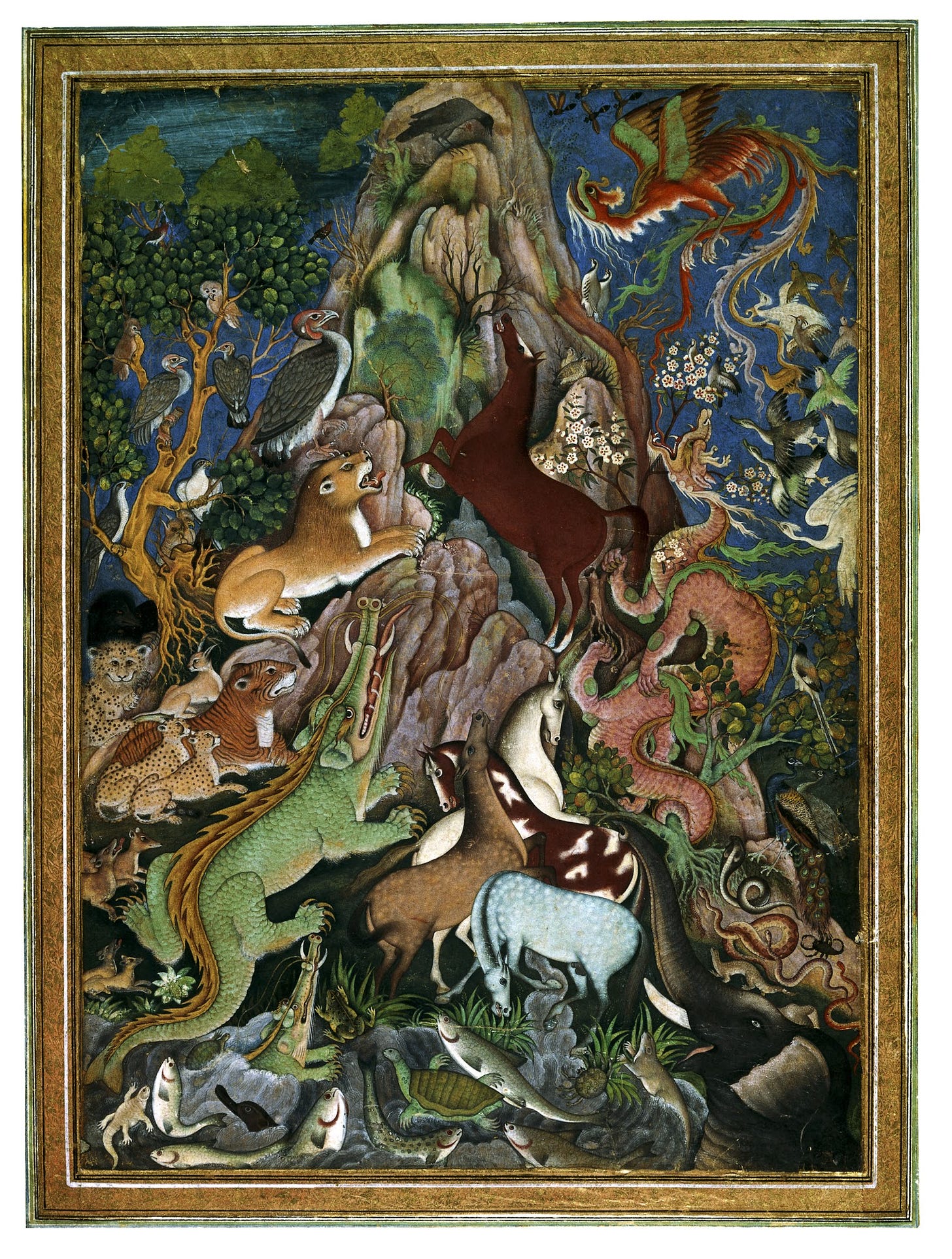A Deeper Look - Issue #10 | Mar 14 2021
Masks and Identities, Artificial Canaries, and Google v. Microsoft
Hello Friends:
This week we take a look at:
A Weekly Reflection
“Artificial Canaries: Early Warning Signs for Anticipatory and Democratic Governance of AI” - International Journal of Interactive Multimedia and Artificial Intelligence [March 2021]
“Technology and the Free Press: The Need for Healthy Journalism in a Healthy Democracy” - Written Testimony of Brad Smith President, Microsoft Corporation - House Committee on the Judiciary [12 March 2021]
Artefact of the Week
Much of our screen time has been devoted to entertainment, be it YouTube, TV, Netflix, Amazon Prime, or Disney + and this has prompted some thoughts on life and identity.
Entertainment provides an element of both escapism and reality. Take the dramas and series on Netflix - they take us away from our couches and show us life as we wish it to be, not as it really is.
These TV shows also depict characters that we think reflect our image, in appearance, mindset, and habit - but in the sobering reality of daylight we are confronted with the harsh reality that gulf between who we think we are and how others see us, is wider than we can possibly imagine. For those familiar with the show New Amsterdam we may see ourselves reflected in the charismatic and young hospital director Dr. Max Goodwin (played by Ryan Eggold) but end up slightly traumatised by the realisation that others around us view us as the doddering but respected and lovable neurologist Dr. Vijay Kapoor (played by Anupum Kher).
This provides us with a framework for how we see and think about ourselves and others: there is 1) the person we see ourselves as, 2) the person others see us as; and 3) the person who we actually are. The answer to who are we is not as simple as we might initially suspect. In a world designed for endless self-promotion who are we?
Are we defined by mask we present to the world? Are we the defined by the reaction of others, to both our mask and the expressions on it? Or are we defined by the faces underneath our masks? If we were to pause, take our masks off and look our own reflection in the mirror would we recognise ourselves? And would those closest to us recognise what they would see?
Stephanie Ann Frampton, associate professor of classical literature at MIT (where she serves as co-chair of Ancient and Medieval Studies and faculty director of the Programs in Digital Humanities) comments in an interview:
“The language used to talk about masks in the ancient world is telling: in Greek, the word is prosopon, which means “something that goes in front of the face” (pros- “across,” ops “face”). In Latin, one of the words for mask is persona, thought to have meant “something through which sound passes” (per- “through,” sono “to make a sound”). Persona, of course, developed a wider set of meanings in the classical and post-classical world, eventually emerging in English as “person.” But even in the time of Cicero, persona was already being used to describe the “part” or “character that one sustains in the world” — in other words, the role or roles we play in society.”
What are the limitations of deep learning? - “Artificial Canaries: Early Warning Signs for Anticipatory and Democratic Governance of AI”
One of the themes of this newsletter has been intersections of technology, the humanities and the future. This week’s highlighted paper entitled “Artificial Canaries: Early Warning Signs for Anticipatory and Democratic Governance of AI” argues that given the rapidly evolving nature and complexity of artificial intelligence there is a need to develop a monitoring system that can anticipate and flag threats of artificial intelligence. The report observes:
We are not mere bystanders in this AI revolution: the futures we occupy will be futures of our own making, driven by the actions of technology developers, policymakers, civil society and the public. In order to prevent foreseeable harms towards those people who bear the effects of AI deployments, we must find ways for AI developers to be held accountable to the society which they are embedded in.
The paper identifies three key steps in developing these artificial canaries: 1) identifying key milestones in AI’s development that lead to transformative events; 2) mapping the casual relationships between these milestones; and 3) identifying canaries by using these casual relationships to map out the dependencies in technological progress. “Progress on these milestones can thus represent a ‘canary’, indicating that further advances in subsequent milestones will become possible and more likely. These canaries can act as early warning signs for potentially rapid and discontinuous progress, or may signal that applications are becoming ready for deployment.”
The report however is most interesting for its reference to some of deep learning’s key weaknesses and limitations. Read differently these skills also read as critical competencies future generations. Skills which we should be cultivating in our educational systems and skills which in many ways are honed by a solid grasp of the liberal arts, and in subjects like history, social studies, and English. These are skills which are not technical in nature but when combined with a specialised technical skill set can be especially powerful. The six areas which immediately caught my attention were:
Concept Formation: The ability to formulate, manipulate and comprehend abstract concepts. (In English: how does one identify the theme of a novel or poem? How do elements of plot differ across different literary traditions?)
Uncertainty Estimation: The ability to formulate, manipulate and comprehend abstract concepts. (Social Studies: How does one understand the concept of democracy? How is democracy understood and manifested across time and space?)
Reinterpretation: the ability to partially re-categorisie, re-assign or reinterpret data in light of new information without re-training from scratch. (Social Studies: Analysis of a demographic dividend, what do changes in population or demographics mean for a country’s economic outlook?)
Navigating Brittle Environments: the ability to navigate irregular and complex environments which lack clear reward signals and feedback loops. (Political Science: How to respond to uncertainty, analysis of present day political situations? What does the
Context Sensitive Decision Making: the ability to adapt decision making strategies to the needs and constraints of a given time and context. (History and Social Studies: What were the options available to British PM David Lloyd George in allowing representation from the British Dominions, given both the constraints he faced, and the need to balance the interests of America, and France during the Paris Peace Conference of 1919?)

“Technology and the Free Press: The Need for Healthy Journalism in a Healthy Democracy” Written Testimony of Brad Smith President, Microsoft Corporation
On March 12 President and Chief Legal Officer of Microsoft, Brad Smith submitted written testimony to the House Judiciary Committee on the topic of technology, journalism and a free press.
The report is interesting not only for its assessment of the challenges that journalism and the media faces, but for its overview and summary of Google’s news business model and the threat Google poses to media in the 21st century. Listed below are selected of excerpts from the submission:
Challenges to the Role of a Free Press
The Disappearance of Local Newspapers: “Since 2000, ad revenue for newspapers has shrunk 70 percent, by $34 billion. In the same timeframe, newspaper circulation has dropped by half, with 27 million fewer daily newspapers in circulation in 2018 than were published when the century started.”
Loss of Professional Journalists: “Opportunities for professional journalists are diminishing. According to a report by the University of North Carolina’s Hussman School of Journalism and Media, over the last decade the number of newspaper reporters has been more than halved, dropping from 71,000 in 2010 to 35,000 today”
News Deserts and Diverse Media: “Today, half of the nation’s counties – 1,540 – are served by just one newspaper and 200 counties no newspaper at all. 9 Almost 70 percent of U.S. counties without a daily or weekly newspaper are outside of metropolitan areas, 10 creating so-called news deserts.”
The Impact of Technology:
The Growth of Digital Advertising: In 2020, spending in the U.S. on digital advertising reached $121 billion, accounting for 54 percent of the total spending on advertising
Google’s Monopoly:
“News organizations have ad inventory to sell, but they can no longer sell directly to those who want to place ads. Instead, for all practical purposes they must use Google’s tools, operate on Google’s ad exchanges, contribute data to Google’s operations, and pay Google money. All this impacts the ability of news organizations to benefit economically even from advertising on their own sites. But the problem has other dimensions as well. Ironically, Google’s business model is fed by the very content that these ailing news organizations create.”
“Even though news helps fuel search engines, news organizations frequently are uncompensated or, at best, under-compensated for its use. Google and others are quick to point out that news organizations get referral traffic from their properties, seeming to suggest that on the vast internet, news organizations should be grateful simply to be found.”
On the same day (March 12th) Google’s Senior Vice President of Global Affairs Kent Walker, posted a short article in which he commented:
We respect Microsoft’s success and we compete hard with them in cloud computing, search, productivity apps, video conferencing, email and many other areas. Unfortunately, as competition in these areas intensifies, they are reverting to their familiar playbook of attacking rivals and lobbying for regulations that benefit their own interests. They are now making self-serving claims and are even willing to break the way the open web works in an effort to undercut a rival. And their claims about our business and how we work with news publishers are just plain wrong.
This latest attack marks a return to Microsoft’s longtime practices. And it’s no coincidence that Microsoft’s newfound interest in attacking us comes on the heels of the SolarWinds attack and at a moment when they’ve allowed tens of thousands of their customers — including government agencies in the U.S., NATO allies, banks, nonprofits, telecommunications providers, public utilities, police, fire and rescue units, hospitals and, presumably, news organizations — to be actively hacked via major Microsoft vulnerabilities.
A battle is brewing, and journalism, media, and its implications for democracy lie in the crossfire
Artefact of the Week:
This week’s artefact is a painting in the Mughal style produced in India between 1590 and 1620. The description is of a raven addressing the animals, “poised near the summit of a precipitous mountain, a raven or mynad bird leans down to address an assembly of real and fantastic animals. Fish, horses, dragons, lions, tigers, and a smiling cheetah join vultures, owls, cranes, ducks, and a simurgh (phoenix) to listen to the raven's words of wisdom.”
According to the British Museum, the curators comments explain:
This scene may illustrate a variant of the episode in the Anwar-i Suhayli of the crow addressing the birds to rally their support against the leader of the owls. Real animals are combined with dragons and the simurgh, or phoenix.
The British Library on the Anwar-i-Suhayli comments:
The Anvār-i Suhaylī or Lights of Canopus (the brightest star in the southern constellation of Carina) is a collection of interrelated fables, mostly about animals, set within a frame story… [and] became best known in the West as the Fables of Bidpai and was first published in English in 1570 as The Morall Philosophie of Doni.
Thank you for reading, until next week.
FK



